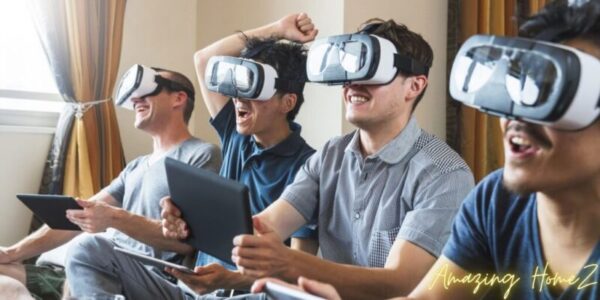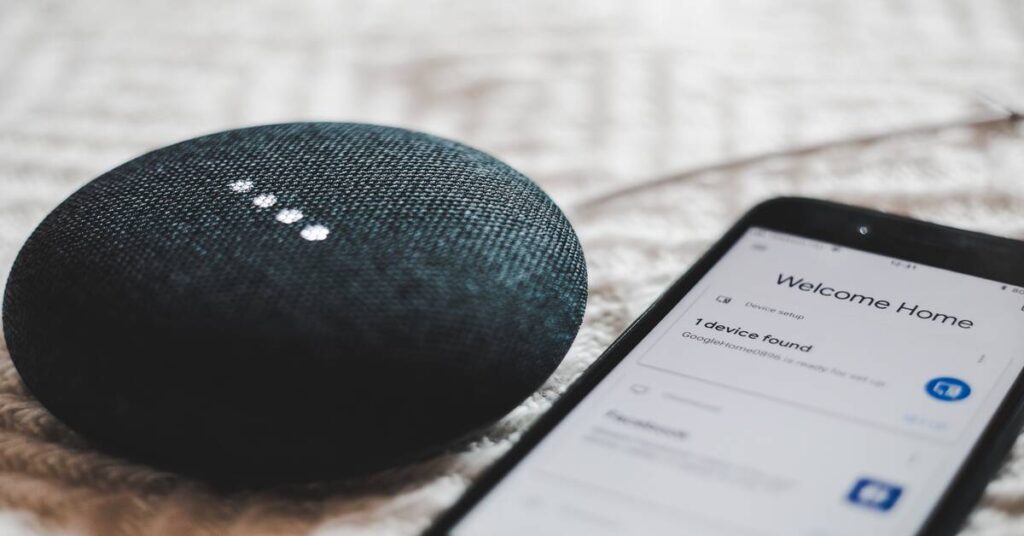The very talked about Metaverse by Meta (renamed from Facebook) founder Mark Zuckerberg today is understood as a combination of Virtual Reality (VR), Augmented Reality (AR) and video where people can interact in a virtually programmed and developed world that is different from reality but is built by taking inspiration from the real environment around us.
Metaverse & Augmented/ Virtual Reality applications
AR is a computer-generated content, overlaid on the real-world environment. Industries including healthcare, education, real-estate, farming, and broadcasting are already using this technology.
In a layman’s viewpoint, virtual reality might be limited to gaming, amusement-park simulator rides, or a fun “experience,” like walking in the era of dinosaurs. But its practical applications are manifold: helping doctors practice difficult surgeries, teaching teenagers how to drive cars safely, allowing judges in a courtroom to virtually visit a crime scene are just some of its use cases. In the interior design field, however, VR technology is actually less about helping designers who are creating works and more about helping them communicate those ideas to clients.
Traditional Methods in home design
Traditional methods of advising and assisting customers in home design have relied upon a combination of verbal explanations and 2D drawings. While this has served the industry faithfully, it has some principal flaws.
The process of communication can often leave a lot of room for confusion and disappointment. Even when both the designer and customer are able to correctly express their vision, there is always a chance that the imagination doesn’t quite fully satisfy the customer’s needs.
In the case of 2D drawings and conceptual depictions, the risk is that the customer will not fully appreciate the dimensions of depth and the sense of the room from various vantage points.
These can be overcome by modern 3D methods of home design.
Modern methods in Home design
In our increasingly digitized world, where everything from our phones to our lights is “smart,” it should come as no surprise that virtual reality (VR) and augmented reality (AR) are starting to play a prominent role in the home design industry. It’s a logical relationship: designers have always imagined new or re-imagined existing spaces, created a drawing via sketch or digital ones, and presented that visualization to their clients. Now, the drawing technology has advanced from paper, onto a screen, and finally into a three-dimensional (3D) projection.

The New Era of Interior Design – Experiencing before finalizing
While designers are used to interpreting 2D representations of designs like floor plans, elevations, and finish boards, non-design professionals typically have more trouble visualizing the experience of being in spaces proposed by 2D representations. Virtual reality (VR) and augmented reality (AR) allows viewers to get a better sense of how a space will look and feel in a 3D mode of representation that is more like the everyday experience.

Using VR for interior design produces amazing results. Instead of drawing in 2D, explaining, or imagining what a room may look like, clients can now put on a VR device and walk through different iterations of their future living spaces. This allows clients to see it from every angle, get a sense of the vastu or feng shui, and feel assured of what they’re going to invest in.
Due to the increasing cost-effectiveness of virtual reality, virtual walk-throughs are becoming common for both corporate and elite customers. Increasing partnerships between software developers and interior designers are bringing greater precision and affordability to virtual interior designs.
Showcasing lighting and automation
Virtual Reality is changing the way people shop for smart home technology. Instead of browsing static displays at a retail shop, they can now stay in the comfort of their own homes to experience how smart home products will look and function in a home while moving virtually through each room.
There’s no better way to experience smart home technology than to touch it and use it, but virtual reality is the next best thing, and stands to help homeowner better understand what they’re buying and how it will work. It’s a big movement in the smart home industry to simplify the process of integrating smart products and systems into a home. Home systems integrators already have the ability to remotely access their clients’ system to update software, diagnose and fix problems, and to monitor the status of certain smart home products. This saves time, effort and money for everyone.
Virtual reality smart home tours could do the same thing. The experience is so real that the end result—a fully integrated smart system installation—can be more closely aligned to the client’s expectations. In simple words, by viewing a smart home in virtual reality, one can more confidently and accurately express exactly how he’d like his own smart home to perform. This reduces any time or money a person might have otherwise spent to modify your systems.
Virtual Showrooms – Displaying furniture/wallpapers/ paints virtually in home to avoid buying confusions
Users now have the power to use their phone’s camera to virtually install real-life wallpapers, paints, and tiles from top brands into their home, allowing them to visualize what each product will look like under the room’s lighting conditions and existing furniture. This removes all the guesswork & the customers no longer have to visualize what a pattern will look like in their home, because the app shows them. This lets people buy with confidence, and confident purchases make happy homes.

There are also a ton of AR apps designed to place furniture in your home. Brands like IKEA have developed their own apps to showcase their collections. There are even apps to measure a room, allowing you to take precise measurements of a space and immediately project them onto a live feed of that space through an app and your phone’s camera.
As the computing power of AR/ VR devices improve, allowing graphics to become ever more realistic, virtual showrooms may begin to displace traditional brick-and-mortar stores.
Buying Real Estate – Experiencing how the home feels before buying in
Today, consumers expect high-definition (HD) imagery, maps and even drone footage of a property before they dial in to schedule a showing. Imagine if consumers could tour a home from the comfort of their living rooms or offices? Real estate firms are already implementing virtual reality (VR). This solution is appealing to long-distance consumers. The ability to navigate a home, inspect the floor plan and have a 3D experience before visiting a property is having a staggering effect on the real estate industry. It is expected of VR to become more and more mainstream as new consumer 3D cameras flood the market.
Home office automation & Metaverse meeting platforms
The idea of using a virtual headset from home in order to attend meetings may appeal to employees and businesses alike, as it would save time and money for both parties. And this isn’t just a perk for office working, as it can be easily used to tour places, view products, and meet people from across the globe.
Meta (formerly Facebook) has revealed a plan to hire 10,000 new workers within Europe in a bid to work on their new “metaverse” concept. This concept looks to incorporate virtual reality (VR) headsets into the workplace.

As hybrid and home working becomes the norm, companies such as Meta are looking to ride the wave and potentially promote a global culture for VR integrated professional workspaces. This would lead to people working from home and putting on their headsets to enter virtual meetings and workspaces.
Remote and hybrid working is undeniably a fixture of modern working life now, and the ability to work in a virtual office rather than a physical one definitely has a uniqueness to it. However, while a virtual meeting room seems like something you’d see in a film about the future, we are not far away from spending most of our working lives in the ‘metaverse’. In theory, this will allow businesses to cut down on office costs, hire employees that live further away, and accomplish more through the working day.
Metaverse Entertainment systems using VR
Virtual reality or VR is slowly becoming a reality in home entertainment. The entertainment industry is one of the most enthusiastic applications of virtual reality and some believe that VR is set to be the future of entertainment. Gaming is undoubtedly the most noticeable area, but others are also becoming increasingly popular, like the virtual museums, theme parks, music concerts, gallery viewing in VR, etc.
With huge tech companies investing millions of dollars to come up with VR devices, the concept is no longer a theory. Tech leaders such as Google, Meta, Sony and Microsoft, among others, are fighting for space and trying to outsmart each other.
Imagine being able to watch a live football or a cricket match from the comfort of your home, sitting in your very own comfortable recliner and having the feel of being right there in the stadium, experiencing the game. Hard to imagine? But soon it’s going to be the reality.

Museums have started launching VR walkthroughs providing users with an unparalleled digital showcase by fully immersing them in the experience. Any museum of any country in the world can be available at your fingertips! The virtual way to visit a museum can be very useful in changing the attitudes towards museums and encouraging more people to engage.
Allowing people to view 3D images that appear life-sized makes the entertainment experience seem realistic and enjoyable.
Advantages of Metaverse AR/VR in interior designing, lighting and automation for clients
-
Better Visualization
AR in interior design help the client visualize the project before it is developed. Using AR in interior design gives an ability to the user to design the space the way they want.
-
Design editing abilities
User will also get an ability to edit the designs and make changes even if the design is at the final stage. So, users need not worry about the tedious corrections that are done in actual décor and furniture.
-
Better guidance
AR in interior design will let a user guide the designer in the best possible way. Even the minutest of detail can be communicated interactively using AR.
-
Find and try products remotely
The clients can try various products for their new project such as the furniture without paying a dime.
Advantages of Metaverse AR/VR in interior designing, lighting and automation for designers
-
Interactive idea presentation
Using AR it would be much easier for designers to present their innovative ideas to clients.
-
Better collaboration
The AR in interior design will also help the designer to collaborate in a better manner with both the architect and the clients. Improved collaboration between client, designer, and architect results in better finished product.
-
Profitability
An effective AR visualization for the clients will help in accelerating the purchase and designing process along with increasing the probability of closing successfully.
-
Competitive edge
The designers can gain a competitive edge by giving their clients a complete view and information about their future projects.
-
Increased customer retention rate
The AR in interior designing will not only help designers in attracting new clients but also in retaining the existing ones.
Conclusion
In the near future you may enter a Matrix-style virtual space and mold it to your liking with a simple hand gestures or even just a glance. And you never know how these kinds of virtual tools may become a necessity.
3D augmented reality and Virtual reality are the technologies that are serving the needs of new-age customers. Personalization appeals to 90% of the customers. Hence, using AR, designers and architects can attract and retain the customers like never before.
Questions answered:
Is there a significant amount of AR/VR currently being used in the world of interior design?
How does it help communicate design ideas to the client?
Is it now being expected by clients?
What practical applications does AR/VR have?
Is it often seen as a novelty?





Pingback: Highlights of ACE Tech Exhibition, New Delhi – 16-19 Dec 2021 - Amazing homeZ